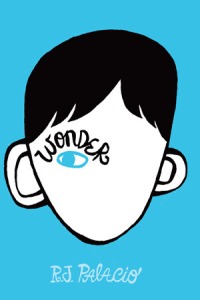Last year, at the beginning of the pandemic, one of my friends started an online book club for her 12 year old daughter and her friends. Loving a good book and needing to connect with people outside of the millions of Zoom calls for work, I joined in. We ended up reading three books: Amal Unbound, Roll of Thunder, Hear My Cry, and Front Desk. All three books have young, strong female protagonists, and they each represented a population that more often than not, is marginalized. While they were at time heartbreaking, they were also heartwarming and hopeful.
Roll of Thunder, Hear My Cry, by Mildred D. Taylor, is set in rural Mississippi in the 1930s. The book was published over 40 years ago, and it is only one book out of several about the Logan family. The Logans are a Black family who own & farm their own land in rural Mississippi. Cassie, the only daughter, is nine years old in this novel, and lives with her parents, grandmother, and three brothers. While the main character is Cassie, the entire family plays an important role in the telling of this story. I first read this book in my Children’s Lit class as an undergrad and it has stayed with me for over 25 years. It’s a hard book to read because, unfortunately, the content is a true depiction of what life was like for Black families during the Great Depression in the American South. And in all honesty, as I reread this book and others in the series, I was reminded that the challenges the Logan family faced were not limited to this time or place. Even though this book was first published in 1976, the characters and their stories are timeless and relevant in today’s world. Both boys and girls, as well as adults, should add this to their to-be-read list. You will experience a multitude of emotions reading Roll of Thunder, Hear My Cry . . . joy, sadness, anger, and frustration, just to name a few.
Our little reading group also read Amal Unbound by Aisha Saeed. Published in 2018, Amal is a twelve your old girl living in a Pakistani village. Amal’s dreams of one day teaching are crushed when she must stop attending school to help at home with her younger siblings. To make matters worse, she is sent away to the house of the village landlord where she becomes a servant, penance for an unfortunate occurrence between Amal and the landlord’s son. Like Cassie, Amal is a strong young girl who faces roadblock after roadblock as a result of her being a part of a marginalized group. Both of these girls refuse to let their circumstances control their lives. They both stand up for themselves and others, often at great peril. The reader closes the book knowing that neither of these two girls will ever play the victim; they are survivors.
The third book we read, Front Desk, by Kelly Yang, has stayed with me the most. So much that I devoured the sequel, Three Keys, in one morning over the Christmas holidays. Mia Tang and her parents are immigrants from China and they find themselves running a motel in California, not too far away from Disney Land. As Mia and her family settle in, they find themselves often taken advantage of because of their immigration and economic status. Similar to Cassie and Amal, Mia speaks up at the injustices she witnesses. Mia is also instrumental in bringing the community together and empowering the people in her life. I absolutely adored Front Desk, but Three Keys was just next level for me. Yang’s style is simple and beautiful and gentle; Mia and her friends and family come alive and as a reader, I felt like I was experiencing the challenges right along with her. Not only does Mia use her voice to help others, her entrepreneurial spirit will have the reader cheering her on to success (and possibly wanting to invest.)
All of these books are exercises in empathy. The authors have done an excellent job weaving the hard and ugly facts into these pieces of fiction. Reading about the injustices and the challenges all three girls face should frustrate the reader. That being said, the perseverance, resilience, and problem solving Cassie, Amal, and Mia display should also leave the reader with hope.









